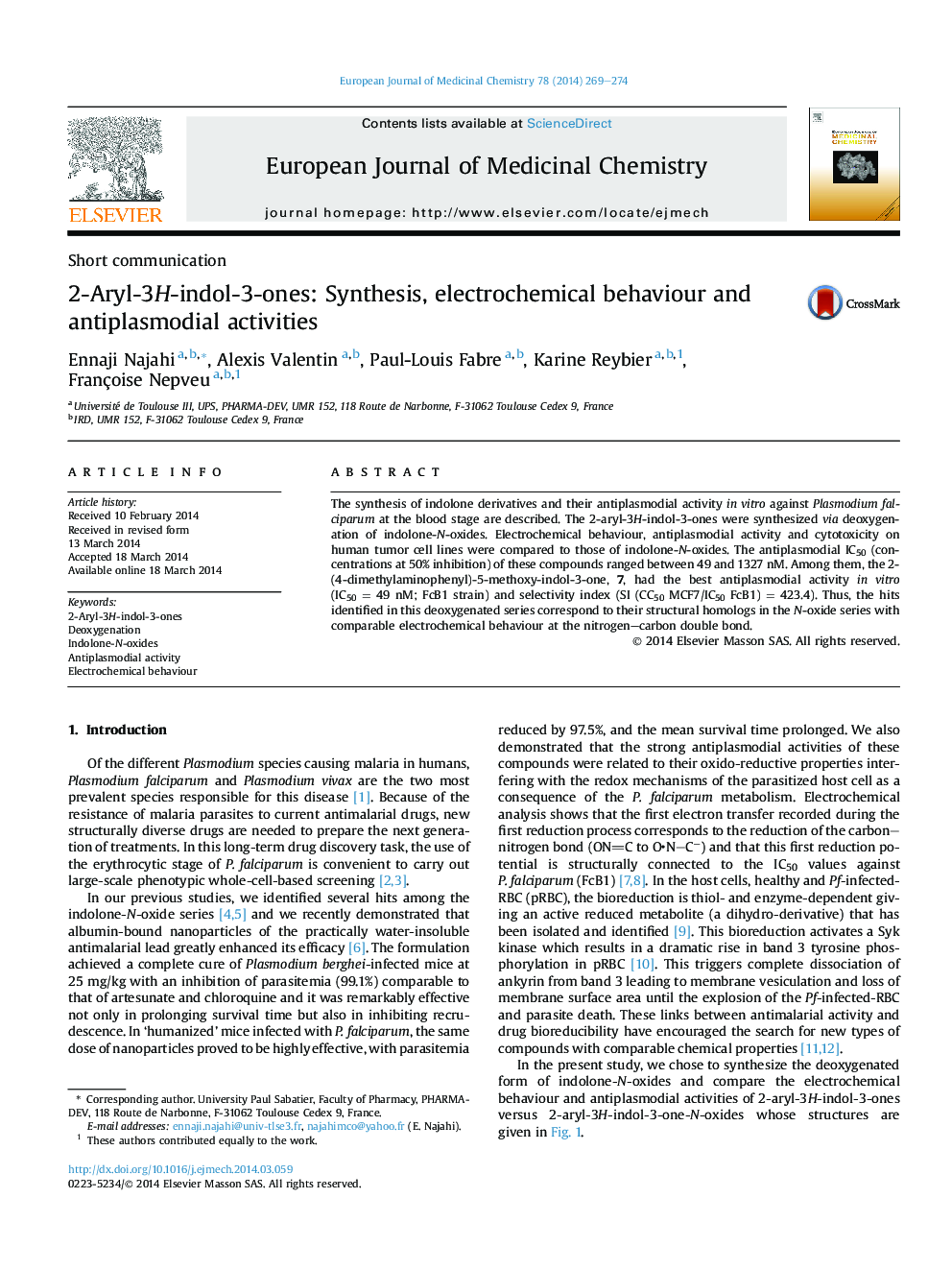| Article ID | Journal | Published Year | Pages | File Type |
|---|---|---|---|---|
| 1394195 | European Journal of Medicinal Chemistry | 2014 | 6 Pages |
•Synthesis of 2-aryl-3H-indol-3-ones via deoxygenation of indolone-N-oxides.•Tested for antiplasmodial activity against Plasmodium falciparum.•Electrochemical behaviour and biological activity were compared to those of N-oxides.•Compound 7 was most active with IC50 49 nM.
The synthesis of indolone derivatives and their antiplasmodial activity in vitro against Plasmodium falciparum at the blood stage are described. The 2-aryl-3H-indol-3-ones were synthesized via deoxygenation of indolone-N-oxides. Electrochemical behaviour, antiplasmodial activity and cytotoxicity on human tumor cell lines were compared to those of indolone-N-oxides. The antiplasmodial IC50 (concentrations at 50% inhibition) of these compounds ranged between 49 and 1327 nM. Among them, the 2-(4-dimethylaminophenyl)-5-methoxy-indol-3-one, 7, had the best antiplasmodial activity in vitro (IC50 = 49 nM; FcB1 strain) and selectivity index (SI (CC50 MCF7/IC50 FcB1) = 423.4). Thus, the hits identified in this deoxygenated series correspond to their structural homologs in the N-oxide series with comparable electrochemical behaviour at the nitrogen–carbon double bond.
Graphical abstractA series of 2-aryl-3H-indol-3-ones was synthesized via deoxygenation of indolone-N-oxides and was evaluated for in vitro activity against chloroquine-resistant strains of Plasmodium falciparum.Figure optionsDownload full-size imageDownload as PowerPoint slide
